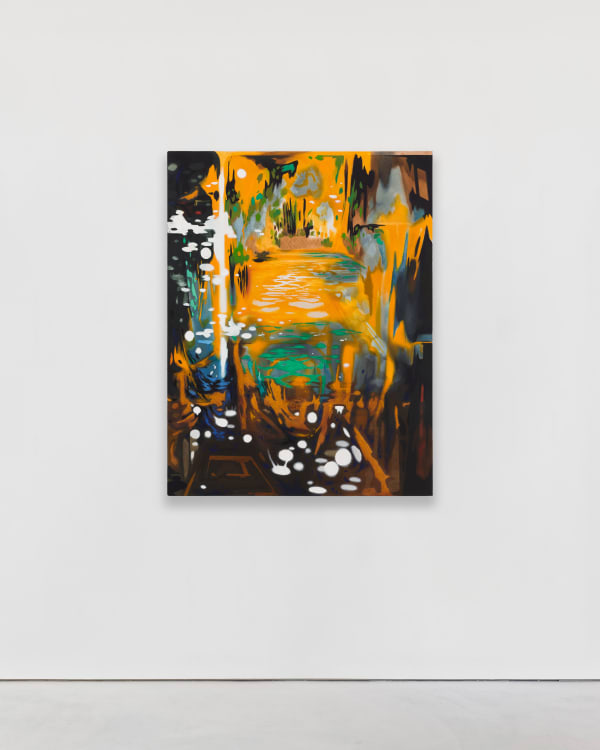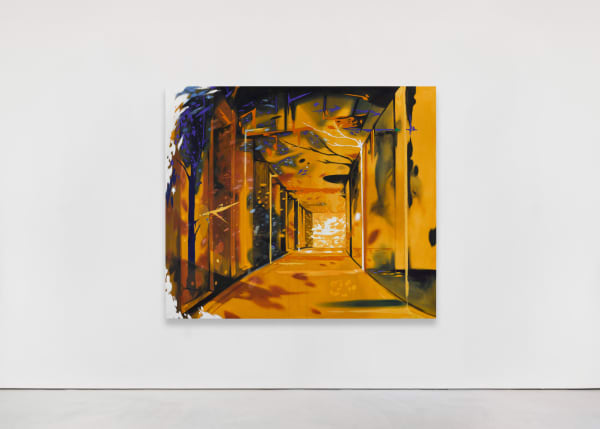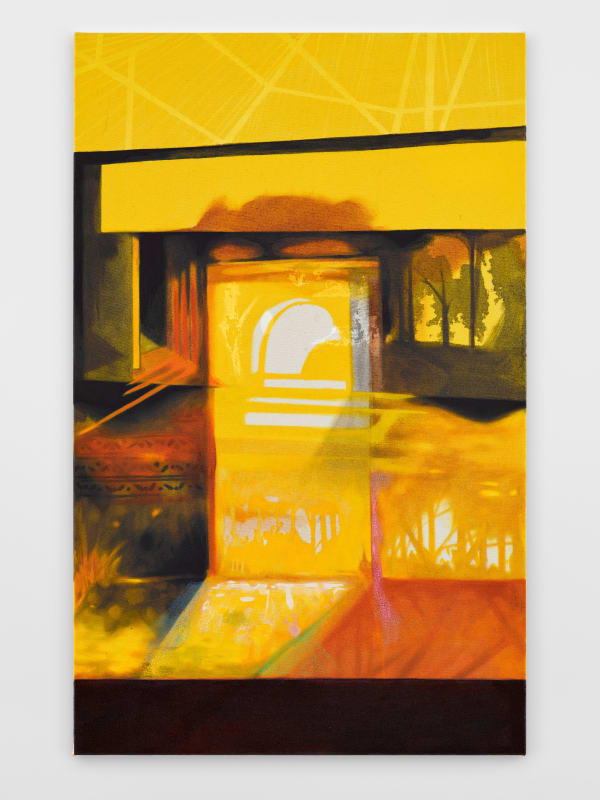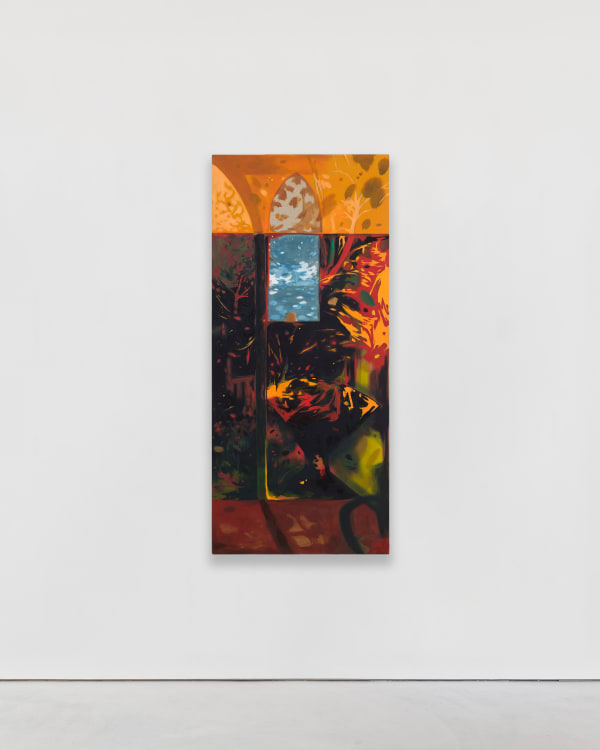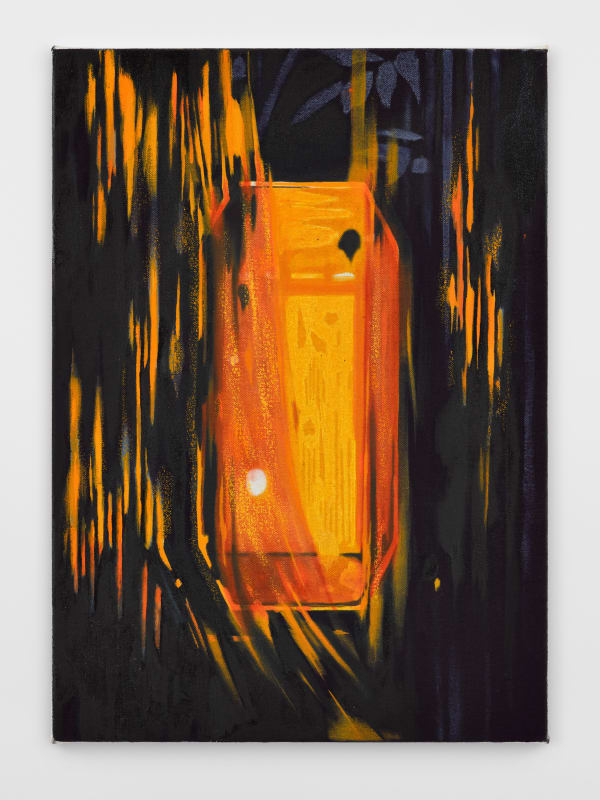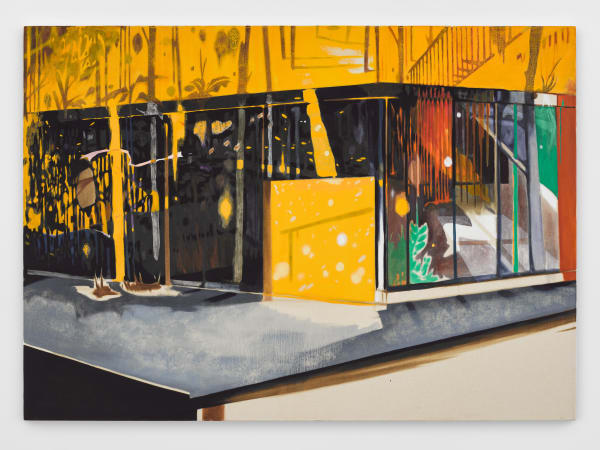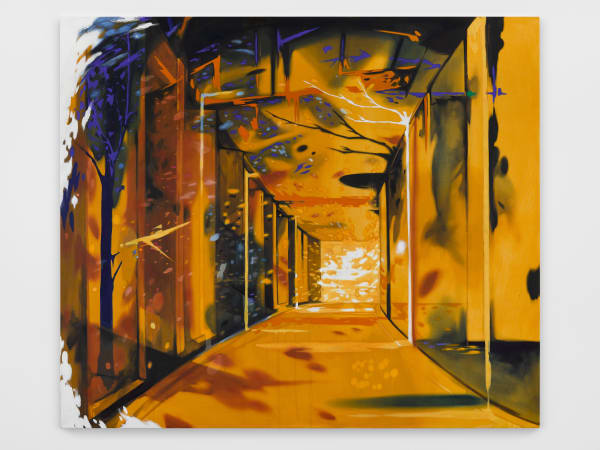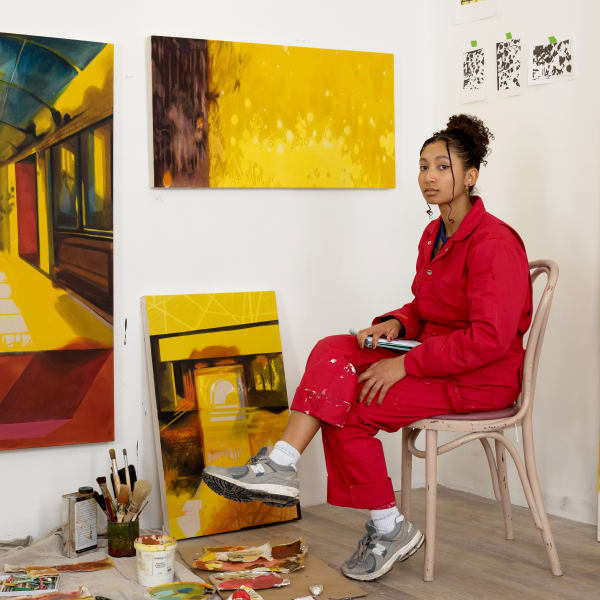Hettie Inniss: Rememories from the Floating World
GRIMM is pleased to present a solo exhibition of new works by British Caribbean artist Hettie Inniss (b. 1999), on view at the London gallery from 30 May to 20 July 2024. This is the artist’s first solo exhibition with GRIMM, opening to coincide with the fourth edition of London Gallery Weekend (31 May - 2 June).
Inniss’s work responds to multisensory influences and bodily experiences, capturing and preserving a moment in time inflected by scent, light, sound and memory. Across the works on view in the exhibition is a desire for recollection, of exploring the past in order to make sense of the present. For Inniss, painting can be a vehicle for accessing a subconscious, emotional state and a means of scrutinising memories, both voluntary and involuntary.
The genesis of painting for Inniss begins outside the studio itself, with a semi-diaristic practice in which the artist attempts to record in detail instances when she experiences olfactory memory, the strong association of a time and place with a specific scent. By attempting to recall the sights, sounds and thoughts that accompany smell, the artist observes the fallibility and hierarchies of visual memory; spaces come into focus whilst, simultaneously, abstract absences are revealed.
Compositions start to be derived through drawings from these self-observations, clarifying the emotionally resonant and collapsing the past onto the present. Often architectural in their nature, the works appear as interiors devoid of figures, with details of rooms or passages highlighted. Often interspersed with a subtle floral motif or overlaid with the branches of trees, there is a feeling of nature reclaiming urban space or of competing timelines compressed. For Inniss, painting becomes a tool to explore her own cerebral archive, utilising memory as an act of “willed creation”, an idea inspired by Toni Morrison’s essays in The Source of Self-Regard. Painting from memory is therefore not simply a way to assess how something truly was but a means of scrutinising how and why things appear the way they do once committed to memory.
Often sketching from an image in her mind’s eye, the artist visualises her own patterns of thought and questions why certain events or elements appear more clearly than others. Working light to dark, Inniss begins with the brightest white tones at the surface, before applying a mid-tone across the canvas then following with darker passages, producing a kind of inverted image, like a developing photographic negative. The process and the result itself recall flashbulb memory, the near-photographic recollection of emotional experience. Translated into paint, the images, like our own subconscious recall, can be mysterious and lacking in detail, bringing about certain biases. The images reveal both fact and absence, exposing hierarchies of individual thought and memory, with specific colours, figures and sceneries coming into focus, while others remain unearthed or misremembered.
Choices about the painting’s scale and the shape of canvas indicate the feel of a certain memory, some smaller, more tentative, others dominant, enveloping and immersive. This is true also of the mark-making, with some more sparse or hesitant, flickering into focus, while others are bold and graphic and delineate a clear geometry to define a room or landscape. The handling and layering of paint also speak to the form of memory, with areas of translucence recalling overlapping or transient experience, deployed as washes over the canvas in thinned-out oils.
Gaps in understanding, however, might also produce a need to be filled in. The paint is often lent an additional physicality through layering gesso or adding sand to the paint to create texture as a kind of stubbornness, something to offset the alarm caused by the imminent possibility of forgetting. Memories, often imbued with a kind of dreamlike logic or lack of logic, also find visual analogy in paint, with long shadows cast from objects with no discernible source of light and stark uses of light and shadow giving an overall sense of the otherworldly.
Throughout all the paintings in this exhibition, Inniss points to different facets of memory as a performative act and not a static reality. In particular, the artist draws on her own personal experience as a woman of dual heritage in order to question how spaces are constructed and how she remembers them, exploring both the clarity of - but also gaps within - memory to reflect her own nuanced lens of understanding the world.
About the artist
Hettie Inniss (b. 1999, London, UK) lives and works in London (UK). Inniss graduated from the Painting MA course at the Royal College of Art, London (UK) in 2023, and was awarded the Sir Frank Bowling Scholarship in 2022. The Tate Collective commissioned her to create an artwork in response to a piece in their collection in October 2023.
Inniss’ most recent exhibitions include: The Painted Room, curated by Caroline Walker, at GRIMM, Amsterdam (NL); I Don't Paint What I See at Berntson Bhattacharje, London (UK); Somewhere In Between at Hew Hood Gallery, London (UK); Fluidity at The Night Café, London (UK); RBA Rising Star at Royal Over-seas League, London (UK) and Impressions at Subtitle Labs, London (UK).
Her work is held in the permanent collection of the AkzoNobel Art Foundation, Amsterdam (NL); the Lakeside Collection, Rotterdam (NL); the New Light Collection, Yorkshire (UK) and the Rachofsky Collection, Dallas, TX (US).

